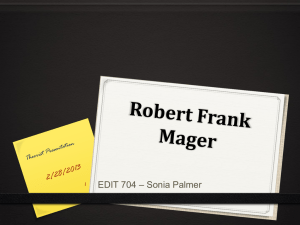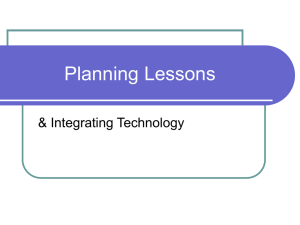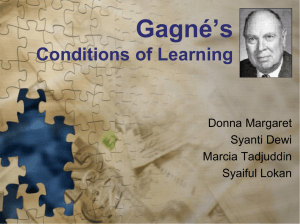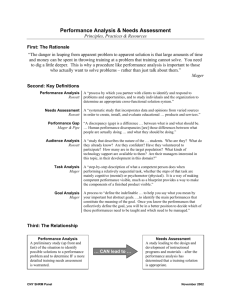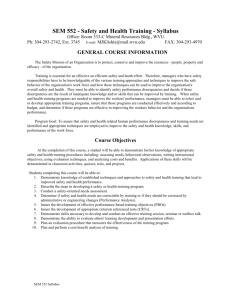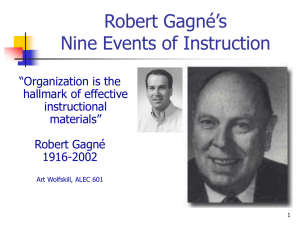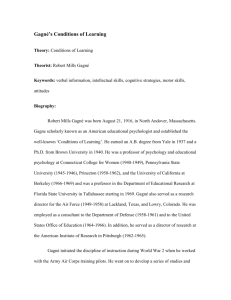Techniques & Methods for Writing Objectives & Performance
advertisement
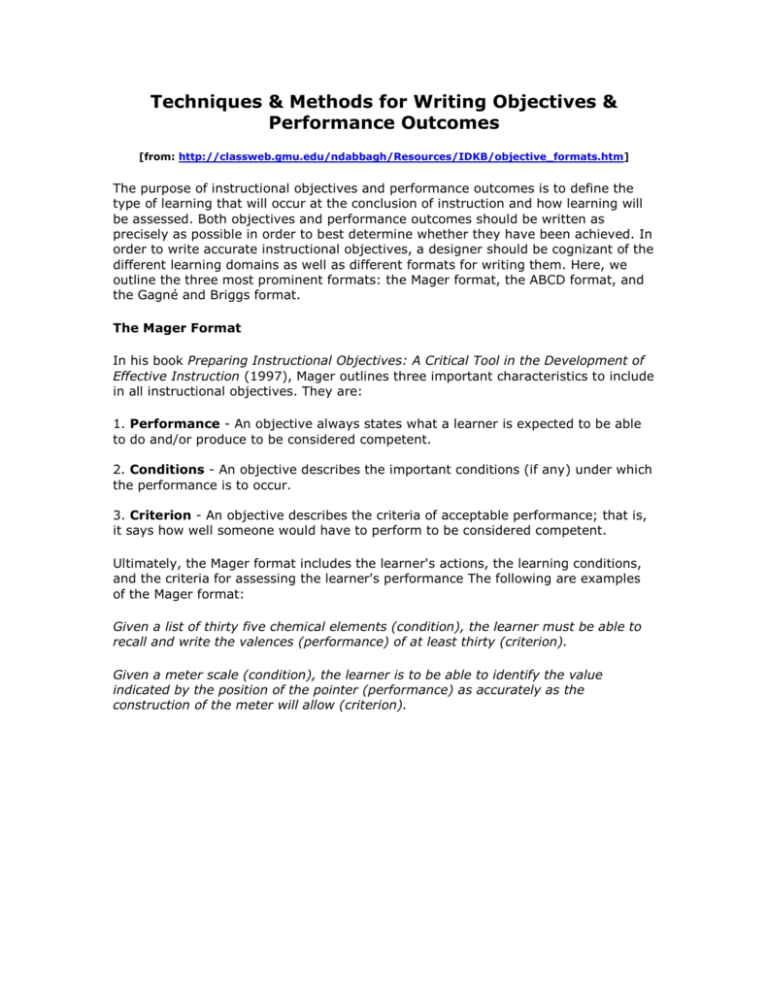
Techniques & Methods for Writing Objectives & Performance Outcomes [from: http://classweb.gmu.edu/ndabbagh/Resources/IDKB/objective_formats.htm] The purpose of instructional objectives and performance outcomes is to define the type of learning that will occur at the conclusion of instruction and how learning will be assessed. Both objectives and performance outcomes should be written as precisely as possible in order to best determine whether they have been achieved. In order to write accurate instructional objectives, a designer should be cognizant of the different learning domains as well as different formats for writing them. Here, we outline the three most prominent formats: the Mager format, the ABCD format, and the Gagné and Briggs format. The Mager Format In his book Preparing Instructional Objectives: A Critical Tool in the Development of Effective Instruction (1997), Mager outlines three important characteristics to include in all instructional objectives. They are: 1. Performance - An objective always states what a learner is expected to be able to do and/or produce to be considered competent. 2. Conditions - An objective describes the important conditions (if any) under which the performance is to occur. 3. Criterion - An objective describes the criteria of acceptable performance; that is, it says how well someone would have to perform to be considered competent. Ultimately, the Mager format includes the learner's actions, the learning conditions, and the criteria for assessing the learner's performance The following are examples of the Mager format: Given a list of thirty five chemical elements (condition), the learner must be able to recall and write the valences (performance) of at least thirty (criterion). Given a meter scale (condition), the learner is to be able to identify the value indicated by the position of the pointer (performance) as accurately as the construction of the meter will allow (criterion). The Gagné and Briggs Format The Gagné and Briggs (1997) format for writing instructional objectives consists of five components. They are: 1. 2. 3. 4. 5. Situation Learned Capability Object Action Tools and Other Constraints The components of the Gagné and Briggs format match Mager's condition, performance, and criterion, only to add the object, or content, of the learning activity as well as any tools used. Here are some examples of objectives according to Gagné & Briggs: Given a battery, light bulb, socket, and pieces of wire (situation), demonstrate (learned capability) the making of an electronic circuit (object) by connecting wires (action) to battery and socket (tools) and testing the lighting of the bulb (action). In response to a question (situation), the learner will state (learned capability) orally (action) three technological trends that will affect the future capabilities of navies (object). The answer is to be completed in three minutes (constraints/tools). The ABCD Format The name of the ABCD format for writing instructional objectives is simply a mneumonic for: 1. 2. 3. 4. Audience Behavior Condition Degree These are the four components that comprise the instructional objective. Notice again that it is similar to Mager's format, yet includes an additional element for identifying the target audience. Below are examples of the ABCD format: Given all the basic shapes - cone, cylinder, cube, and sphere (condition), each second-semester geometry student (audience) will identify (behavior) orally each shape (degree). Using tape recorded readings of the tryout sessions for the school play (condition), students in the drama class (audience) will select (behavior) the proper voice for each character as indicated in the drama text (degree). Table 1: Comparison of Formats Seels & Glasgow (1990). Exercises in Instructional Design. Columbus, Ohio: Merrill Publishing Company. Component Mager Gagné & Briggs ABCD Performance (What will be done) Performance (Doing verb) Learned capability, object, & action Behavior Condition (Under what) Condition Situation Condition Criteria (How well) Criterion Tools/Constraints Degree Learner (By whom) (Implied) (Implied) Audience
